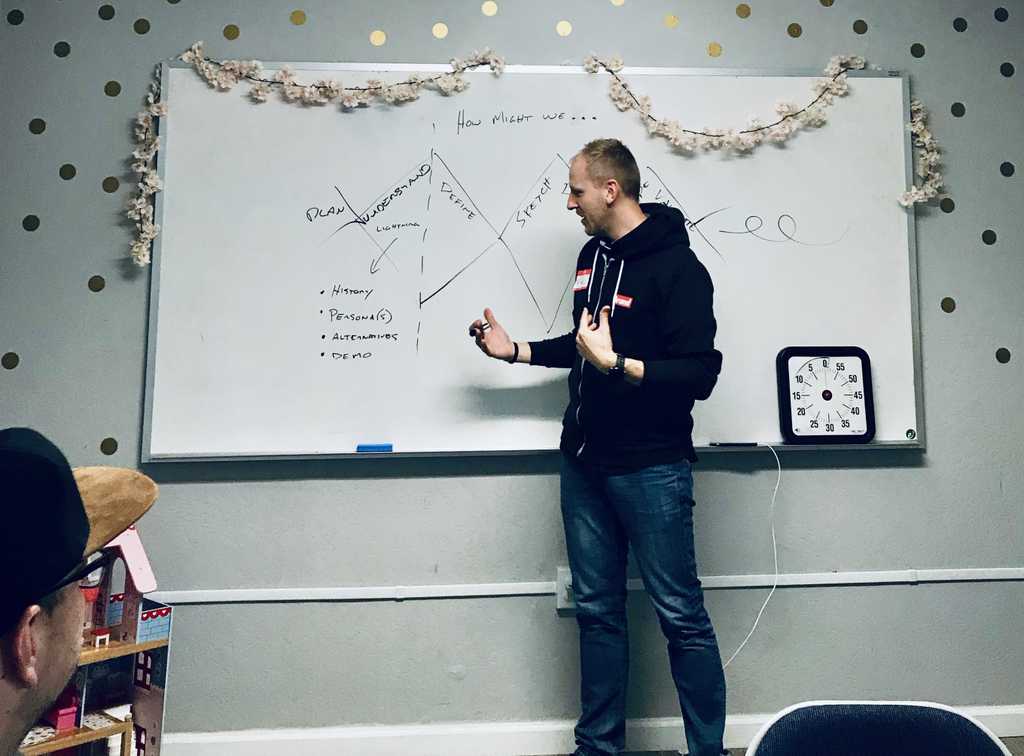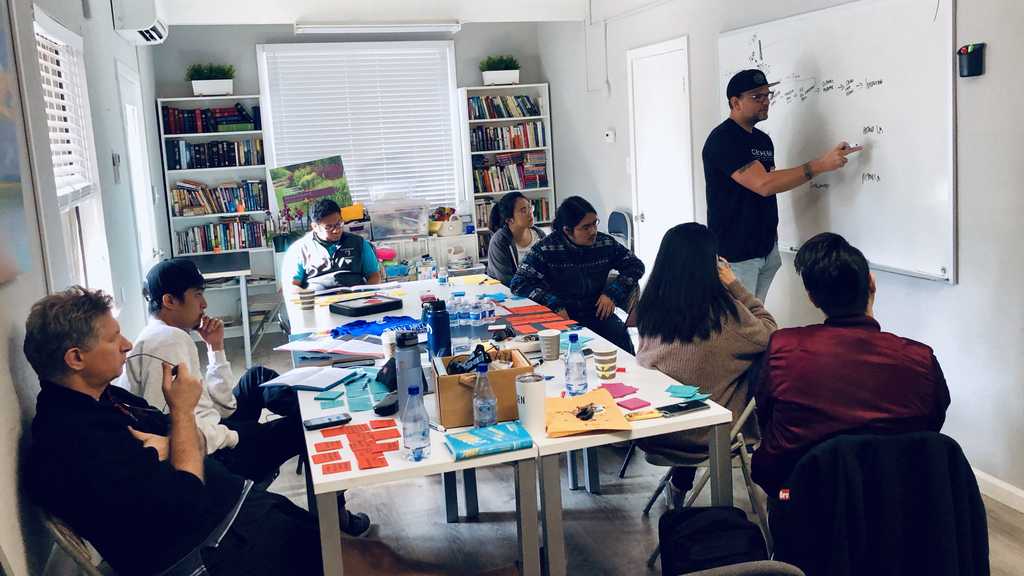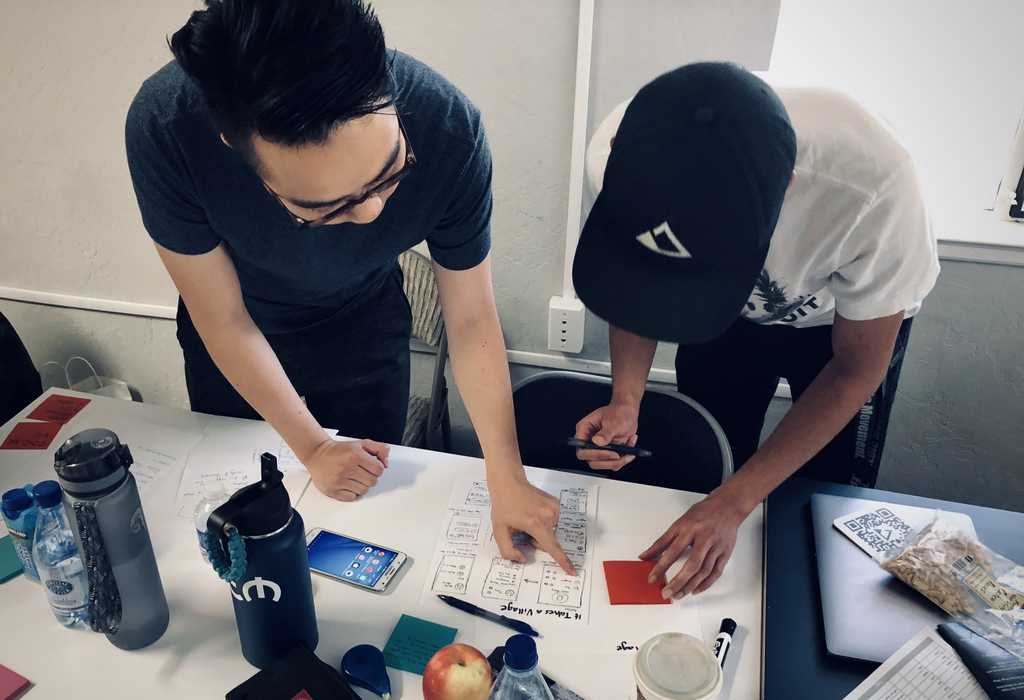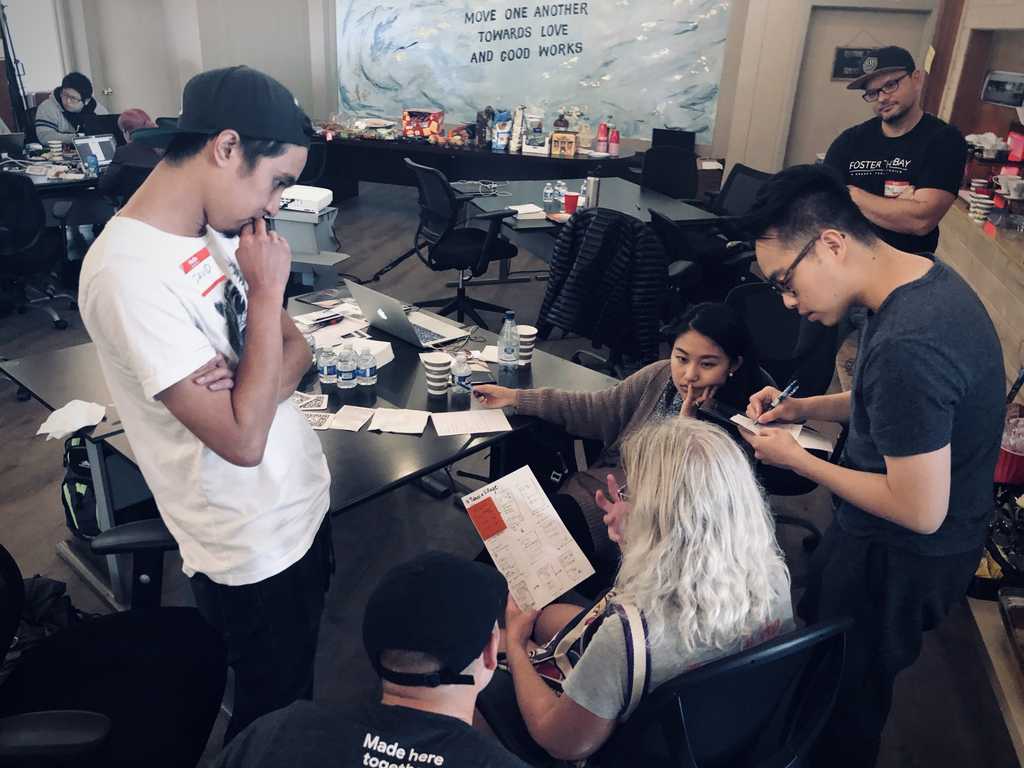Not to be dramatic, but this design sprint changed my life.
For the purpose of this article, I don’t want to spend too much time talking about the design processes I practiced. That information can be found in this article found here written by Marc Krejci, Product Design Manager at Meta. (The photos used in this article are taken from his article.) He was the facilitator of the design sprint.
What I want to talk about is my experience there. I want to talk about how this event was the catalyst for my UX design career.
What is Foster the City?
Back in 2018, I attended a design sprint and hackathon event with FaithTech. The design sprint focused on designing an app for the organization, Foster the City. Foster the City is a non-profit organization that networks with churches and families to foster parents around the nation. At the time of the design sprint, Foster the City was known as Foster the Bay but has expanded its reach since then thus the name change. They believe that any family needs more influential people than just the parents to raise their kids and this is especially true for foster parents. To be blunt, the foster system in America is not great. Children go from house to house, from parent to parent, and some never leave the foster system. Children carry these burdens which brings a layer of difficulty to foster parents.
The Click
Marc taught us the fundamentals of a design sprint according to Google. We learned about the design process, tools for gathering UX research findings, and strategies for ideating with low-fidelity prototypes. During the sprint, we worked closely with Philip Pattison, Executive Director of Foster the City. Philip Pattison is a foster parent himself and we were able to hear from his experiences firsthand.

Philip was candid about his experiences. He shared specific stories he’s had with his adopted daughter. He shared how his community helped his family, such as providing food through meal trains or driving over to lend an extra hand. We were able to empathize with his experiences. It was at this moment, that something inside of me just “clicked”. I engaged with Philip’s emotions and understood his pain points. I could read between the lines of his words and understand the experiences that brought him sadness, the moments that brought him joy. It was at this moment that UX design was more than just ideating to create an engaging product but had the power to truly empathize with people on the other side of the screen.

I am a person who creates thrives on creating things based on it’s meaning - almost to a fault. In TeletracNavman, I thrive on knowing my designs contribute to driver safety. For my friend’s podcast, Everything in Between, I thrive on knowing I’m helping them elevate their project. For my DesignLab project, I created an app that addresses mental health, which is a subject I am passionate about.
During this design sprint, I thrived in knowing that we were meeting the needs of a family. I thrived in knowing that, in a system with a lot of pain and sadness, we could potentially create something to facilitate joy.

This is the design process I desire. A process where we design for people, not for users. A process where I do not simply understand the problem to be solved but the person behind the screen.
The Outcome
The product we created was essentially a messaging app, with the ability to join groups called “villages.” Each village consisted of a foster family and supporting people. The village will be notified if there is a crisis occurring which is shared at the discretion of the foster family. The supporters will be prompted in different ways they can help.
We were in teams when we created our low-fidelity prototypes. At the end of the exercise, we chose one prototype to use for initial usability testing and mine was the one chosen. The usability testing is shown below.

For me, the greatest outcome was the realization that UX design can have a true impact on people. With the right vision and the ability to empathize with people, UX design can truly bring communities, or should I say, villages, together.
